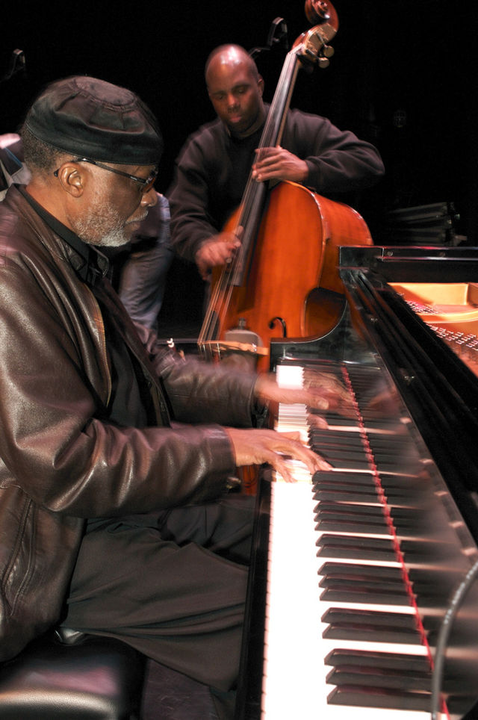Best works of late pianist Ahmad Jamal
Ahmad Jamal plays the piano while James Cammack plays bass. Ahmad Jamal passed away on Sunday. (Wikimedia Commons)
April 19, 2023
Legendary jazz pianist Ahmad Jamal died Sunday.
With a career spanning seven decades, Jamal is known for his creative composition and improvisational mastery. In memory of his vast career, here are three albums of his that encapsulate his skillful playing.
“The Awakening”
“The Awakening” is the perfect introduction to Jamal’s work. The album features seven songs, with a 40-minute run time. With standards like “Dolphin Dance,” “Wave” and “Stolen Moments,” combined with Jamal’s own compositions such as the titular track “The Awakening” and “Patterns,” the album has the right balance of content for new listeners. There’s new songs for listeners who are new to Jamal, but there are still enough well-known songs to hook listeners in.
The standout track on the album is “I Love Music.” I heard “I Love Music” first as a sample on the Nas track “The World Is Yours.” The album features Jamal’s standard flowing chords and loose composition. As the song develops, Jamal’s piano playing gets more advanced and more chaotic. Paired with his standard collaborators, bassist Jamil Nasser and drummer Frank Gant, the song is Jamal at his peak.
“Ahmad Jamal At The Pershing: But Not For Me”
The 1958 classic “Ahmad Jamal At The Pershing: But Not For Me” is one of the greatest live albums ever. Differing slightly from his studio recordings, “But Not For Me” features Jamal playing quiet and chill, adding the perfect background to Chicago’s Pershing Lounge. The brief 30 minute set is one of the best examples of Jamal’s mix of lyrical playing, repetitive lines, crunchy harmonies and fantastic melodic interpretations.
Jamal’s version of “Moonlight In Vermont” is something that every jazz fan should cherish. The song’s simple melody and naturalistic mood is fit for the stereotypical use of jazz: background music in a hazy bar. Jamal, 28 at the time of the recording, was early in his career and had not yet found his normal collaborators. Despite this, bassist Israel Crosby and drummer Vernel Fournier give Jamal the space his prodigious style needs. For example, “Music, Music, Music” has a section about 30 seconds into the song where the trio all combine for some strong chordal hits that just make the composition come alive.
“Pittsburgh”
“Pittsburgh” features Jamal at his most orchestral. With compositional help by Richard Evans, Jamal’s melodic charm shines through. Vast instrumentation from electric bass, to punchy brass, to orchestral strings lines the album’s 50 minute run time. A mixture of Jamal’s hard-bop roots and the funk-fusion sound that ruled the ‘80s, “Pittsburgh” is a nice change of pace from Jamal to a more modern feel.
The best track on the record is easily the opener: “Pittsburg – h.” With an electric bass groove that feels like the track is on the verge of constantly running away from Jamal, “Pittsburg – h” has this 1989 album’s core sound in mind. The horn lines in the track’s intro mimic Jamal’s strong left hand, snapping beats back and forth, shooting the track from the racing blocks from the get-go. The song’s seven minute run time features tons of different sounds throughout to keep the song interesting – the latin section at about the four minute mark is my favorite.
A fitting tribute to his mother and his hometown, “Pittsburgh” is one of Jamal’s most adventurous works.



